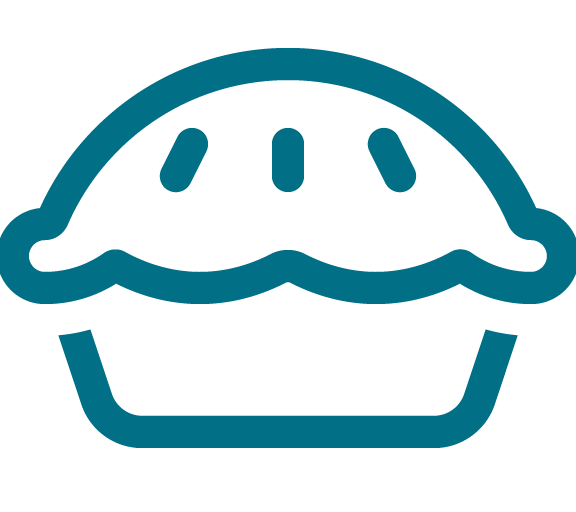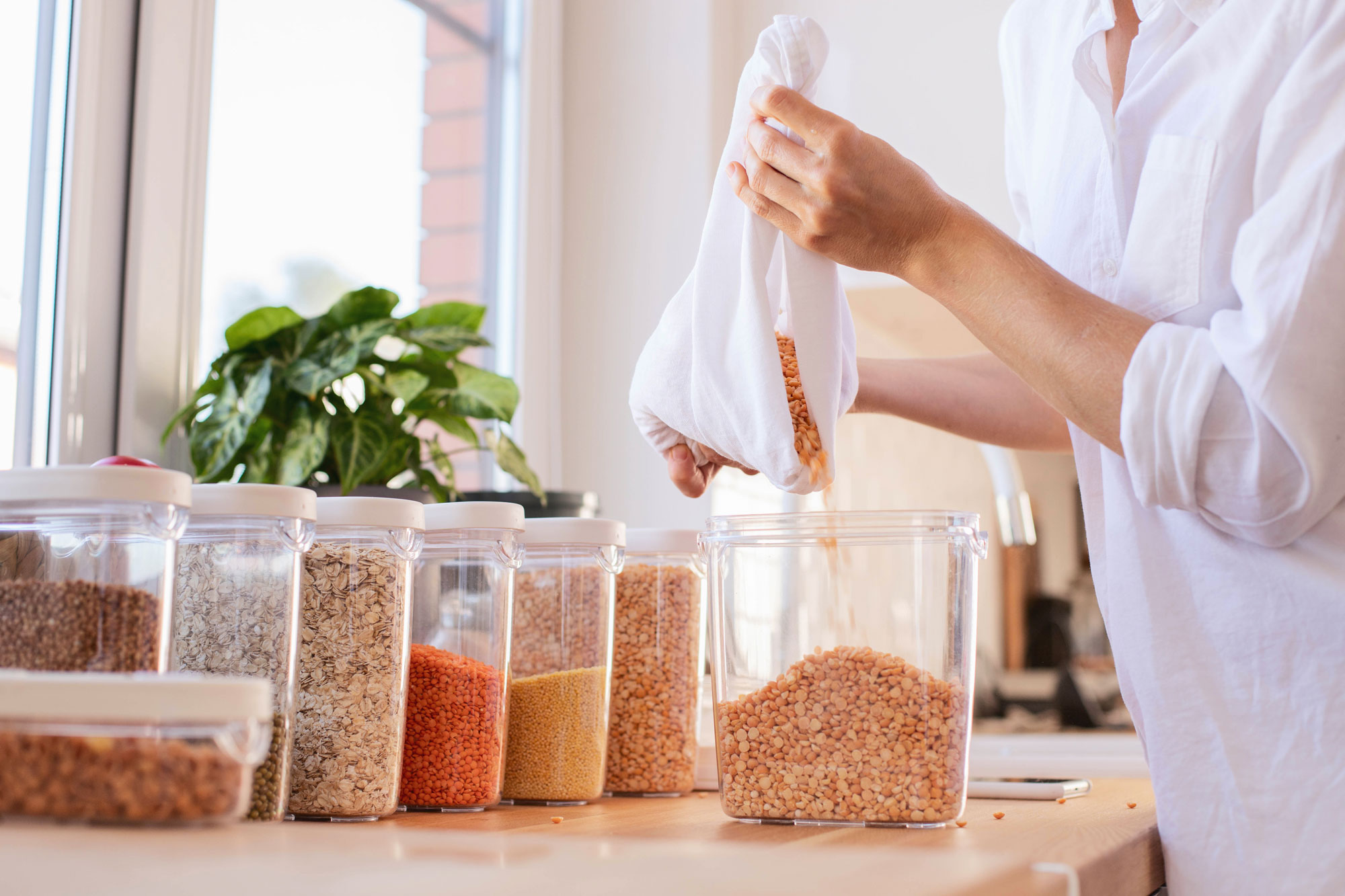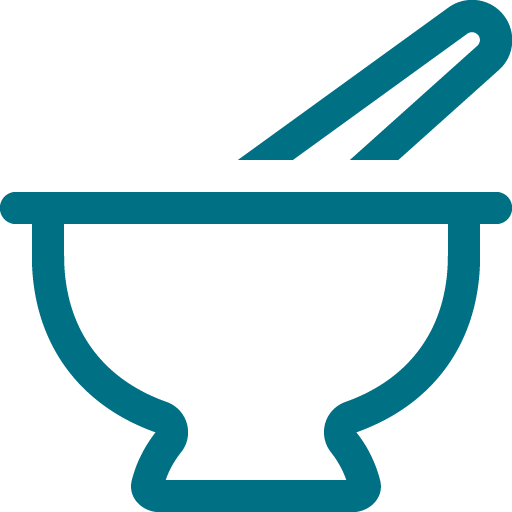
by Jayme Radomski | Dec 11, 2023 | Cleaning, Clutter, Cooking & Kitchen, Eating & Kitchen, Organizing
Organizing certain aspects of your life before Christmas can help ensure a smoother and more enjoyable holiday season. Here are six things you might want to consider organizing right before Christmas.
- Make a list of people you need to buy gifts for.
- Set a budget for each person.
- Purchase or make the gifts well in advance.
- Set aside time for wrapping presents. Organize wrapping paper, ribbons, and tags.
- Check your holiday decorations and assess if anything needs to be replaced or replenished.
- Organize decorations by theme or room.
- Set a day to decorate your home, involving family members if possible.
- Plan your Christmas menu, considering dietary restrictions and preferences.
- Create a shopping list for all the ingredients you’ll need.
- If you’re hosting a gathering, organize seating arrangements and any potluck contributions from guests.
- If you’ll be traveling for the holidays, organize your travel plans well in advance.
- Confirm reservations for accommodations, flights, or any other transportation.
- Make a packing list to ensure you have everything you need.
- Plan a deep cleaning of your home before the holiday season.
- Declutter common areas and guest spaces to create a welcoming environment.
- Ensure that necessary cleaning supplies are on hand.
- Create a shared family calendar to keep everyone informed about holiday events and commitments.
- Coordinate schedules for family gatherings, parties, and other festive activities.
- Plan for any special traditions or activities you want to include.
Remember, the key to a stress-free holiday season is preparation. By organizing these aspects of your life before Christmas, you can create a more relaxed and enjoyable atmosphere for yourself and your loved ones.
Remember that being organized is a process, and it’s important to approach it at a pace that feels comfortable for you. Start small, plan one event at a time and develop systems to maintain organization. Gradually, you’ll experience the positive impact and being organized will come naturally. If organizing is daunting task, the professional organizers at Top Shelf Home Organizers are happy to help. Contact Jayme for a consultation.
by Jayme Radomski | Nov 13, 2023 | Cleaning, Closets, Cooking & Kitchen, Eating & Kitchen, Gratitude, Organizing, Pantry
Are you hosting Thanksgiving this season? Are you helping a loved one put on the feast? We have brainstormed ten things to get organized right before Thanksgiving.
Finalize your Thanksgiving menu, including appetizers, main courses, side dishes, and desserts.
Make a list of all the ingredients you’ll need.
Create a detailed shopping list based on your menu.
Shop for non-perishable items a few days in advance and perishable items a day or two before Thanksgiving.
If you have a frozen turkey, calculate the thawing time and start thawing it in the refrigerator in advance.
Complete as much prep work as possible in the days leading up to Thanksgiving.
Chop vegetables, make pie crusts, and prepare any dishes that can be stored in the refrigerator until cooking.
Ensure your kitchen is clean and organized before the cooking frenzy begins.
Empty the dishwasher, clean surfaces, and organize utensils and cookware.
Set the table a day or two before Thanksgiving.
Ensure you have enough place settings, napkins, and any special decorations you want to include.
Create a cooking schedule for Thanksgiving day.
Assign specific times for cooking each dish to ensure everything is ready at the same time.
Confirm that all your cooking equipment, such as the oven, stovetop, and kitchen appliances, is in good working order.
Clean and organize common areas where guests will gather.
Set up a designated area for coats and bags.
Have a backup plan in case something goes wrong.
Know where to find local takeout options or have a few simple backup dishes that can be prepared quickly.
By organizing these aspects before Thanksgiving, you’ll be better prepared to enjoy the holiday with your people.
Remember that being organized is a process, and it’s important to approach it at a pace that feels comfortable for you. Start small, plan one event at a time and develop systems to maintain organization. Gradually, you’ll experience the positive impact and being organized will come naturally. If organizing is daunting task, the professional organizers at Top Shelf Home Organizers are happy to help. Contact Jayme for a consultation.
by Jayme Radomski | Sep 11, 2023 | Cleaning, Cooking & Kitchen, Eating & Kitchen, Organizing, Pantry
Preparing your kitchen for fall can make the transition to the cozier, colder months more enjoyable and efficient. Here are Top Shelf Home Organizing’s simple steps to help you get your kitchen ready for autumn:
Start by giving your kitchen a thorough cleaning. This includes wiping down countertops, cleaning appliances, and scrubbing the floors. Declutter your kitchen by getting rid of items you no longer need or use. Donate or store items that are taking up valuable space.
Check the expiration dates on canned goods and dry goods. Dispose of anything that’s expired. Organize your pantry by grouping similar items together and making a list of what you need for fall recipes. Make a list of pantry essentials you are low on or out of.
Replace any summer-themed kitchen decor with items that have an autumnal feel. Think about adding fall-colored dish towels, tablecloths, and decorative pumpkins or leaves if you desire. Swap out lightweight kitchen towels and potholders for thicker, cozier options to keep you warm while cooking.
Give your oven, stovetop, and microwave a deep clean to ensure they’re ready for more frequent use during the fall cooking season.
If you enjoy baking during the fall, make sure you have all the necessary supplies, including flour, sugar, baking soda, and pie crust ingredients. Make a list of fall-specific ingredients like canned pumpkin, spices (cinnamon, nutmeg, etc.), apples, and root vegetables. Ensure you have these items on hand for fall recipes. Consider having a variety of teas, hot chocolate, and coffee on hand for those chilly fall mornings and evenings.
Check the freshness of your spices and herbs. Replace any that are past their prime. Organize your spices for easy access when you’re cooking.
Dust off your slow cooker and other large pots you use for making soups, stews, and chili. Ensure they’re clean and in good working order.
If you plan to can or preserve fall fruits and vegetables, make sure you have all the necessary canning supplies, such as jars, lids, and a canning pot.
As the days get shorter, consider adding some cozy lighting options to your kitchen. This could be in the form of warm-toned light bulbs or decorative candles.
Plan some fall-inspired meals and recipes to enjoy throughout the season. Having a menu plan can make grocery shopping and meal preparation more organized.
By following these simple steps, you can create a warm and welcoming kitchen environment that’s ready to embrace the flavors and activities of the fall season. Remember organizing your home is a process, and it’s important to approach it at a pace that feels comfortable for you. If organizing your home is daunting task, the professional organizers at Top Shelf Home Organizers are happy to help. Contact Jayme for a consultation. This article was written in collaboration with our friend, OpenAI.
by Jayme | Feb 8, 2022 | Clutter, Cooking & Kitchen, Eating & Kitchen, Organizing
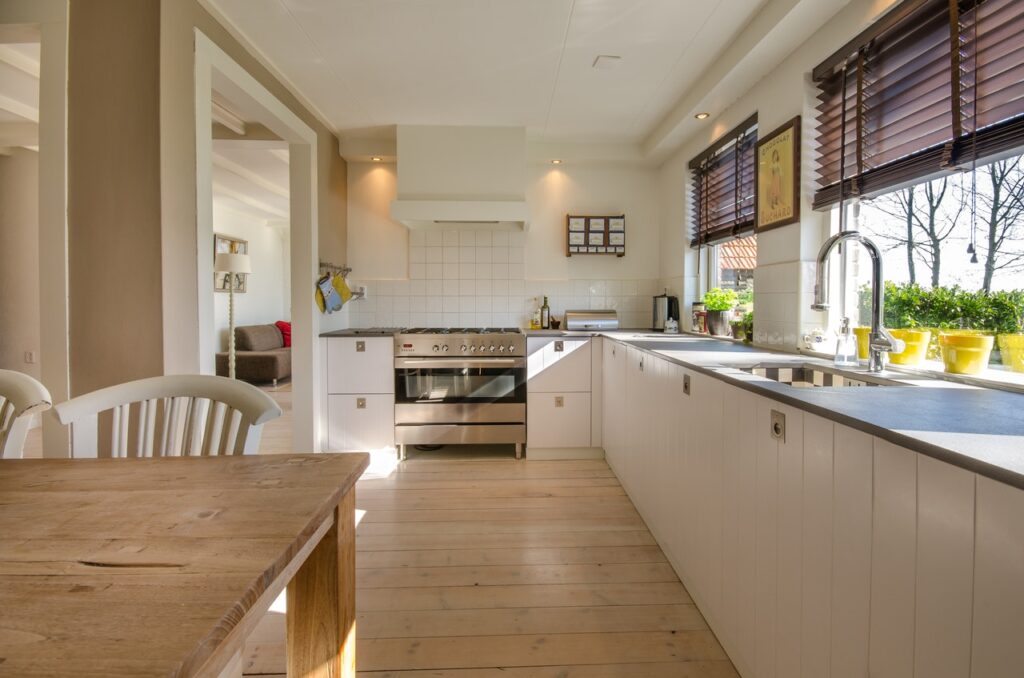 The new year is in full swing. Healthy eating and conscious kitchen choices are likely some of your new year’s goals. This month, we offer ideas on the 14 best areas to focus for decluttering and organizing your kitchen. Every day or two this month, declutter and organize your kitchen by breaking it down into small categories. You will feel a revised focus on your healthy eating goals.
The new year is in full swing. Healthy eating and conscious kitchen choices are likely some of your new year’s goals. This month, we offer ideas on the 14 best areas to focus for decluttering and organizing your kitchen. Every day or two this month, declutter and organize your kitchen by breaking it down into small categories. You will feel a revised focus on your healthy eating goals.
1. Baking dishes
Gather, sort, and evaluate all your dishes intended for baking. Simplify your inventory to the most practical items. Replace items that have lost their non-stick finish, are starting to rust, are starting to warp, or are only used on rare occasions.
2. Seasonings and spices
Pull out all seasonings and spices. Purge those that are expired, lack aromatics, are hard, or will not be used. Inventory what you have in writing, and make a list of what you need to replenish.
3. Coffee mugs
Mugs can consume a large amount of real estate in a kitchen. Consider the number of people in your home that use mugs and how often they are used. Simplify the quantity of mugs to what is practical in your kitchen.
4. Water bottles
Water bottles also take up a lot of space in a kitchen. Limit the quantity of water bottles to the number of people in your house. Bottles that require handwashing, have difficult spouts, tend to leak, or are not popular should be purged.
5. Freezer
Dig deep, inventory your kitchen freezer and deep freezer. Purge items that are old, smelly and show freezer burn. Meal plan around the freezer food you keep to reduce inventory and save money.
6. Formal entertaining dishes
Realistically examine the formal dining and service dishes you need to have on hand. Keep a practical set for a typical gathering. Reconsider if you need specific dishes for a specific holiday.
7. Bar glasses
A general set of tumblers, wine glasses, and pint glasses work well for most cocktails. Ditch the narrowly defined glasses that take up room in your cabinet.
8. Glasses
Reduce your daily glassware to what you use in a day. Every souvenir glass you have collected during your life likely doesn’t fit in your kitchen. Stick to the drinking glasses that are practical for your household and lifestyle.
9. Storage containers
Storage containers have a history of reproducing while you are not looking, and then ditching their partnering lid or base. Gather all storage containers, match up sets, and remove the misfits. Storage containers also take up a large area in your kitchen, so it is important to keep them under control.
10. Specialty gadgets
Avocado slicers’ and pepper storage containers might be fun gift items. But these specific, specialty items that are rarely used take up a lot of space. Consider more multiuse gadgets that are practical and don’t use up your precious kitchen space.
11. Small appliances
So many appliances for so many creative kitchen uses are available. The ideas are unlimited. Small appliances can be economical and practical if they serve more than one purpose and are used more often than once per year.
12. Disposable dishes and flatware
Disposable dishes and flatware from takeout and past parties may be taking over a cabinet in your kitchen. Gather all these items and intentionally plan to use them up. The kids will love having their breakfast on some cute happy birthday plates.
13. Snacks
The pantry likely has a collection of opened bags of snacks and crackers, and an inventory of candy from the past holiday. Get all of the snacks and candy together. Purge those that are stale, old, and completely unhealthy. Use up any opened snacks for your next family movie night. Keep the candy on hand for special treats and rewards for good behavior (if you decided to keep any).
14. Condiments
Condiment packets from school lunches and take out may be filling a drawer in your kitchen. Reduce the amount of condiment packets. Gather them all together, throw out any old condiments, keep a small selection of condiments you would use, and donate all the extras to a food pantry.
Now it is time to get started!
Take this month to work through your kitchen and remove the stuff that doesn’t meet your needs and takes up your limited kitchen space. Take the project category by category. It will keep you focused and it doesn’t require a large block of time.
If organizing your kitchen is overwhelming, Top Shelf Home Organizing would love to help. Contact Jayme for more inspiration.
by Jayme | Aug 23, 2021 | Cooking & Kitchen, Organizing
An organized kitchen is our hopes and dreams for preparing meals efficiently. Setting up the framework of your kitchen can help you be the best chef or short order cook you can be. Here are some tips from the organizing experts.
 Kitchen Items Only
Kitchen Items Only
Your kitchen is prime real estate when it comes to your home. You need to protect the boundaries and only allow kitchen items in the kitchen. The drawers labeled, “office,” “toolbox,” “junk,” or “crafts” can serve a new purpose in your kitchen. Place those items in their respective areas of your home; the office, the workshop/basement/garage, the trash or the craft room. This extra space will be a functional space in your kitchen.
Location
Where your items are located will determine how quickly and efficiently you can move around your kitchen. Everyday plates, glasses and flatware located near the sink or dishwasher will make putting dishes away streamlined. Occasional dishes and glasses can be located on the perimeter. Items that are only used annually or for very special occasions can be placed in a storage area in the basement or garage if space in your kitchen is limited. Small appliances that don’t get used can be donated. Those items take up a lot of room.
Pantry
Whether your kitchen has an official pantry or not, keep food items together versus spread around your kitchen. It will help you keep an accurate inventory of what food you have. Stashing food randomly throughout your cabinets will cause you to lose track of what you have. Identify an area of your kitchen where you will keep food.
Minimize
Minimize the items you have in your kitchen. Duplicates of utensils, cookware, storage containers and small appliances will cause overcrowding in the limited space. Identify the most practical items and place the extras into storage or remove them from your inventory.
There is no doubt a kitchen is one of the most challenging spaces in a home to organize. Establishing a framework for your kitchen and keeping only kitchen items in the kitchen will help maximize your kitchen’s potential. It will also help you be as efficient as you can be. If creating an organized kitchen is overwhelming to you, Top Shelf Home Organizing can help. Contact Jayme to see how Top Shelf Home Organizing can help you.
by Jayme Radomski | Oct 10, 2019 | Cooking & Kitchen, Organizing, Pantry
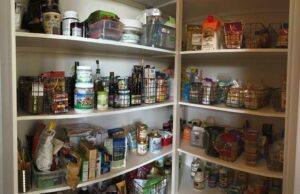 Autumn is a great time to clear out the pantry and make room for fall foods, baking supplies and entertainment planning items. A fresh pantry will reignite your love for cooking and give your kitchen a little refresh. Clearing out and inventorying the food in your pantry can help with your meal planning and grocery shopping. We have put together four simple, practical tips for getting your pantry organized this fall.
Autumn is a great time to clear out the pantry and make room for fall foods, baking supplies and entertainment planning items. A fresh pantry will reignite your love for cooking and give your kitchen a little refresh. Clearing out and inventorying the food in your pantry can help with your meal planning and grocery shopping. We have put together four simple, practical tips for getting your pantry organized this fall.
- Remove all food and other items from your pantry
You will also want to gather food you have stored in other areas of your home. While the pantry is empty, it’s a great time to thoroughly clean all surfaces for a fresh start. Ahead of this project, consider purchasing the food you typically keep on hand. This is an important part of allocating adequate space in your pantry.
- Sort and categorize your food
During this process, you can categorize the food on your kitchen countertops and dining room table. Remove and dispose of expired food. Relocate nonfood items, especially if your pantry space is limited to another storage area of your kitchen or home. Categorize your food into snacks, canned goods, grains, pastas, nuts & seeds, etc.Strategize where food will go in your pantry based on the categories, quantity of food and convenience. You will want frequently used items within reach. Occasionally used items can go on higher, less convenient shelves. You may or may not want kids snack items within their reach.
- Purchase storage products
If you need them, explore and purchase storage containers that will work well for your pantry. Clear bins work great for corralling snack bars, chips and items that come in soft packaging. If you tend to purchase bulk grains, nuts, etc., you may want to consider tight sealing, clear containers for storage of these items that do not come with their own packaging. Measure your space carefully prior to buying storage items, as you want them to fit well in the space they will be used.Also be careful not to overcomplicate containers. Many times, placing pre-packaged food into containers may be more work than needed. Consider food rotation when deciding on containers. You will want to make sure the older food gets used first. Coordinating containers can make the pantry aesthetically pleasing.I also suggest labels for all containers. This will help ensure everyone knows where to return food to the pantry. Adding pull out drawers and baskets are nice for deep shelves to make all items visible and accessible. You can utilize the pantry doors for storage of lightweight, narrow items.
- Return food to pantry
Returning food to the pantry is fun. This is where you get to utilize any new storage products, decide on the best location for the food, and label the bins and containers. Remember that food goes with food in the pantry. Non-food items go with non-food items, and may need to be stored in other areas. The slow cooker you use two times per year, the holiday candles, or kids craft supplies may not have a home in your pantry, especially if you are low on space. Limit food storage in other areas such as the hall closet, bathroom, garage, and basement unless necessary.
Bonus Step: Create a meal plan that utilizes the food you have in your pantry. This will save you cash on your next shopping trip.
Pantry organizing can be a fun and easy organizing project that is good to do with the season changes. For a kick start on organizing your pantry, see if Top Shelf Home Organizing can help you. Contact Jayme for advice. We love what a fresh pantry will do for you.













